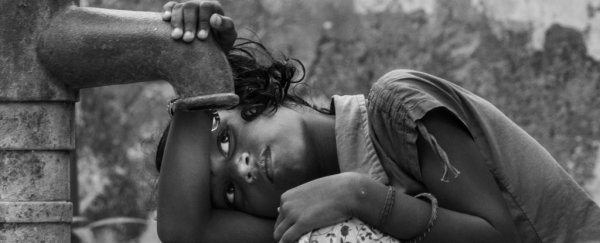It's often assumed that as climate change worsens, so too will the world's risk of violent armed conflict. Over the years, many experts have warned that as weather becomes more extreme and crop yields shrink, we could begin fighting for resources and land with greater frequency and ferocity.
Still, there are those who disagree. A new paper now argues the relationship between climate variability and armed conflict is more complex than we often think, especially since humans can change their strategies based on pros and cons.
Mixing theories from hydrology and microeconomics, the authors suggest that in the future, there might come a point where food and water scarcity might actually lead to less conflict.
During years of bad weather, the benefits from attacking often outweigh peace, and so, it is said, a war over resources ensues. But what happens when those bad years begin to stack up?
As climate anomalies inevitably become more frequent, and years on end of drought and wild weather are all but assured, the authors think the cost of violence may prove too dear.
"After all, the reason why attacking a neighbour's land is attractive is because victory secures more landholdings for the future," Michele Muller-Itten, a microeconomist at the University of California, Berkeley, told Earther.
"If the dry year is the anomaly, these extra landholdings are attractive. But if all future years are bleak, the incentive for conflict disappears again."
To test these assumptions, Muller-Itten and her colleagues used an opportunity cost model created in 2009 to look at the foundations of the idea that a drier future means more conflict.
It's important to note that the authors make clear this should not be considered a tool for "quantitative projections" - or predictions - in any specific context. Instead, the paper is trying to investigate the benefits and risks of conflict over water.
Considering two groups of farmers who might fight for control over limited land and resources, the authors tested what would happen under various rainfall scenarios.
While the findings certainly suggest that droughts can lead to human conflict, there was no support for the idea that these conflicts will always arise along with water scarcity.
During anomalous years of low rainfall, the model predicted an increase in conflict. But when there was a systematic decrease in water availability, the model actually predicted a decrease in armed violence.
In other words, climate change may come to define a new normal that we adjust to as rational agents. Farmers, for instance, may see the opportunity cost of attack as too high if another bad year of rainfall is expected.
The authors emphasise that this is a "strong simplification of reality", but their results do suggest a more complicated reality than the linear relationship we assume exists between drought and conflict.
"If precipitation becomes more variable, as climate models predict, conflicts will not necessarily become more frequent," the team concludes.
"Rather, conflict likelihood can go either up or down, as agents adapt and adjust their response to the new income distribution."
The research itself is narrow in scope and doesn't account for all the impacts drought can have on human conflict.
In fact, a different study published in Environmental Research Letters this week indicates there are "robust correlations" between seasonal climate and violent crime in the US, and the country can expect up to 3.2 million additional violent crimes between 2020 and 2099, depending on whether we manage to curb our greenhouse gas emissions.
What's clear is that findings such as these indicate we truly live in a changing world. As global temperatures and tensions continue to heat up, the more we can predict our future, the better.
The study was published in PNAS.
